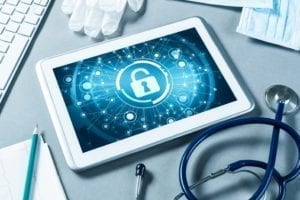 The following is a guest article by Thomas Serval, CEO and Founder of Baracoda.
The following is a guest article by Thomas Serval, CEO and Founder of Baracoda.
Healthcare has never been an easy topic to discuss. Whether you’re at the doctor’s office or in the comfort of your home, talking about your health can be overwhelming. Most of us don’t enjoy going to the doctor. The anxiety of a doctor finding something wrong or being embarrassed to ask questions are some of the reasons why people prefer to get in and out at appointments. Coupled with primary care physicians spending a little more than 15 minutes with their patients, there isn’t enough time to discuss concerns or take a deep look at any test results.
We typically only discuss our health at an annual doctor visit. Yes, these check-in’s are critical, but they only provide a snapshot of what’s going on. We aren’t in the habit of monitoring our health daily or having it monitored from afar. Continuous tracking of patients’ vitals helps them and their doctors get a better understanding of what their health actually looks like. And this is why the role of connected devices in everyday healthcare constantly increases.
In fact, 30% of physicians are using remote monitoring devices in 2022, up from 12% in 2016 and nearly double from 2019. With the help of Artificial Intelligence (AI) and the Internet of Things (IoT), devices like smart patches, wearable bands or smart watches are making it easier to track metrics like pulse, temperature, oxygen saturation, blood pressure, respiratory rate and beyond. This consistent tracking is changing the dynamics between patients and doctor’s, providing a holistic view of a patient’s health and not just a once a year snapshot.
IoT Helps Track Patients from Wherever
IoT is helping connected devices monitor patients and administer care from wherever. These devices are indispensable when it comes to the continuous gathering of reliable health data.
For example, diabetic patients who can’t rely on periodic testing use IoT devices to constantly monitor their glucose levels. From non-invasive glucose monitoring devices, through small spectrometers placed under a patient’s skin, all the way to self administration of insulin, IoT is helping patients stay healthy and controlling their insulin levels. Women who are facing a high risk pregnancy can use connected devices to track changes in maternal and fetal health. In either event and others, IoT devices could be life-saving. Between telemedicine, wearables and smart home devices, senior citizens are using IoT to connect with their doctors from the comfort of their homes or to be remotely monitored for specific conditions and lessening the need for in-person appointments or when that might not be possible.
IoT is enabling medical professionals to provide the best care possible. As people become more health conscious, the use of connected devices to monitor patient health has increased. Access to continuous real-time data helps doctors have a clear understanding of where a patient’s health is at all of the time versus a snippet during a yearly check-in. This wealth of data helps physicians make better decisions and improve the quality of care provided.
AI Allows for Critical Decision-Making
AI is aiding in changing people’s lives with more accurate diagnosis and improving treatment plans. The data collected by connected devices and processed by AI ultimately helps doctors make critical decisions quickly.
The first step to understanding how AI is helping doctors and patients is to understand the different types and how they will help make a difference:
- Computer vision AI enables computers to gain high-level understanding from digital images or videos. EndoBRAIN and EndoBRAIN-EYE are examples of how this type of AI is being used on a microscope sensor to capture images and videos during colonoscopies. Thanks to this technology, a public database of colonoscopic videos is created and is available to use by request.
- Wearable sensors worn directly on the skin are able to collect and analyze health data in real time – and that goes well beyond smart patches. A new skin-like device that is being developed could potentially detect emerging health problems before first symptoms appear. The device will likely also do a personalized analysis of collected health data without the need of a doctor.
- Remote Patient Monitoring (RPM) devices are leveraging AI to capture real-time data and combine it with clinical data to remotely monitor patients to notify doctors of adverse reactions to medications or severe changes in biomarkers. For example, AliveCor is leveraging AI and machine learning ECG sensors that are helping doctors and patients receive personalized heart data anywhere and at any time allowing for a better understanding of how to manage their heart health.
AI’s ability to analyze big data sets and generate impactful insights is helping track and treat medical conditions regardless of a patient’s location, allowing healthcare professionals to keep tabs on patients in between visits or when in-person or telehealth visits aren’t an option. These technologies will never replace doctors, rather they are meant to help augment and complement the patient journey with the end goals of making them healthier.













